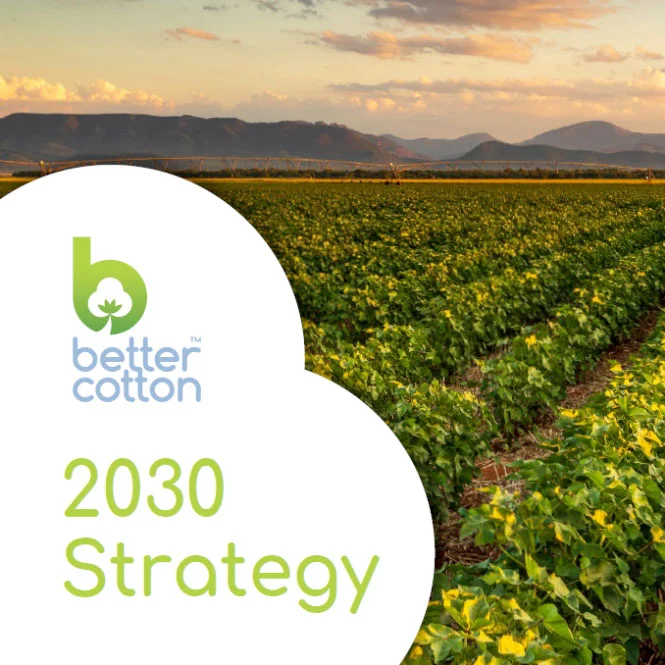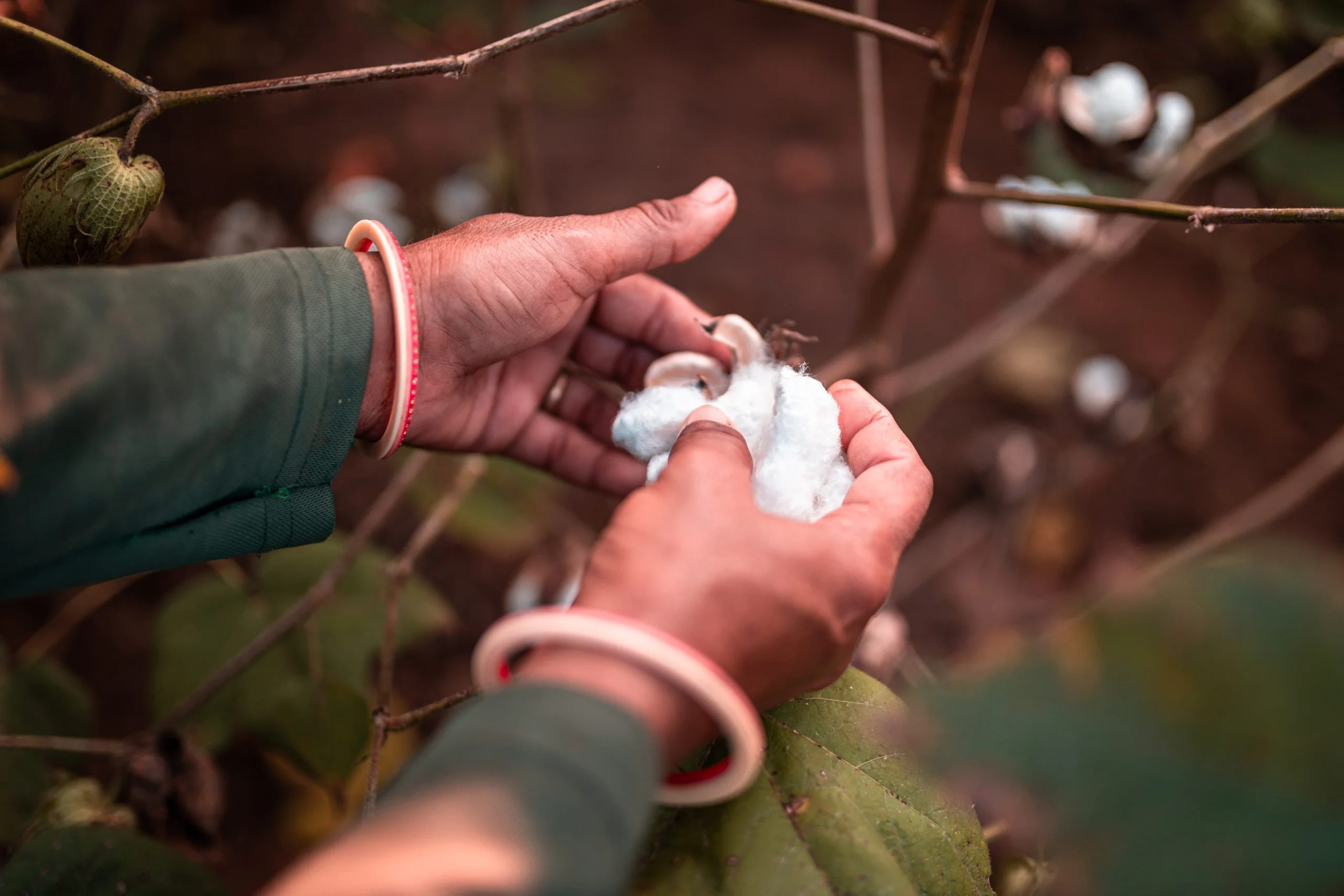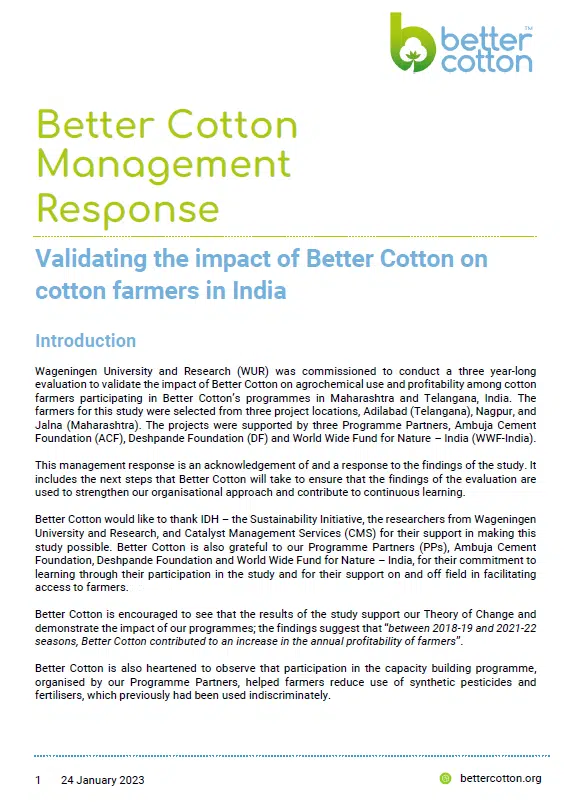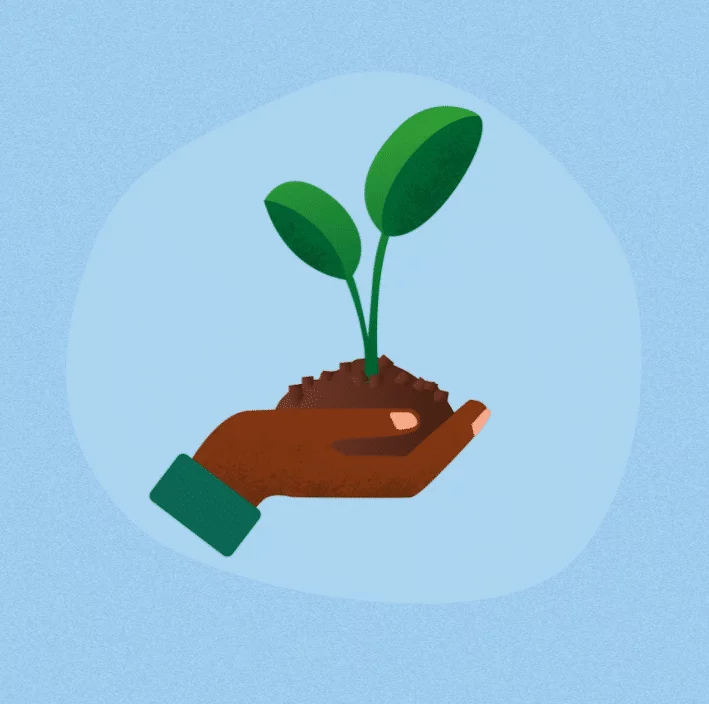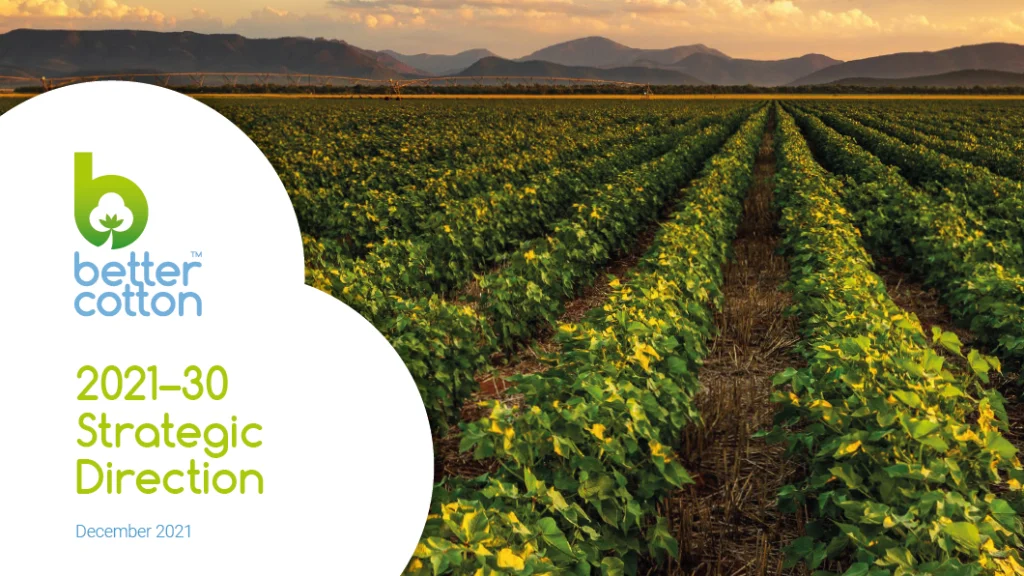- Who we are
- What we do
In just over 10 years we have become the world’s largest cotton sustainability programme. Our mission: to help cotton communities survive and thrive, while protecting and restoring the environment.
- Where we grow
Better Cotton is grown in 22 countries around the world and accounts for 22% of global cotton production. In the 2022-23 cotton season, 2.13 million licensed Better Cotton Farmers grew 5.47 million tonnes of Better Cotton.
- Our impact
- Membership
Today Better Cotton has more than 2,700 members, reflecting the breadth and diversity of the industry. Members of a global community that understands the mutual benefits of sustainable cotton farming. The moment you join, you become part of this too.
- Associate Membership
- Civil Society Membership
- Producer Organisation Membership
- Retailer and Brand Membership
- Supplier and Manufacturer Membership
- Find Members
- Member Monitoring
- Better Cotton Platform
- myBetterCotton
- Resources – Better Cotton Conference 2022
- Complaints
- Whistleblowing
- Safeguarding
- Get Involved in the Better Cotton Programme
- Thank you for contacting us
- Better Cotton’s Data Privacy Policy
- Log in
- Members’ Area
- Request for Proposals
- Better Cotton Cookie Policy
- Web Reference
- Measuring Cotton Consumption
- How to Implement the Chain of Custody Standard
- Resources – Better Cotton Conference 2023
- Certification Bodies Old
- Latest
- Sourcing
- Latest
The founding premise of Better Cotton is that a healthy sustainable future for cotton and the people that farm it is in the interests of everyone connected with it.
Let us help you find what you’re looking for
Results for {phrase} ({results_count} of {results_count_total})Displaying {results_count} results of {results_count_total}
In the first of a series of articles on data and impact reporting, we explore what our data-driven approach to measuring and reporting on impact will mean for Better Cotton
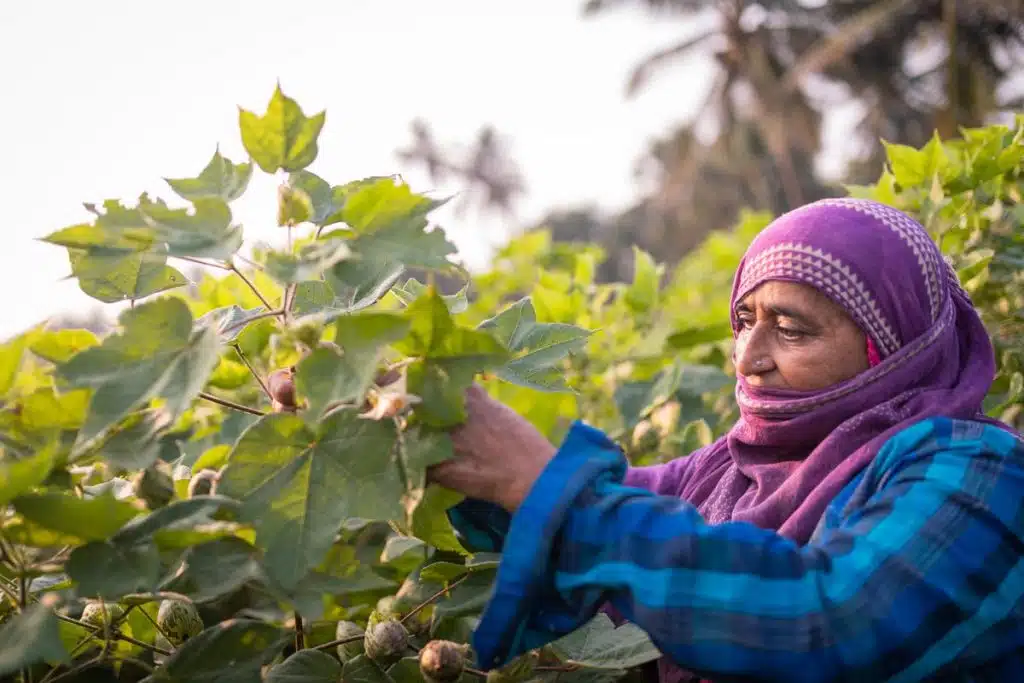
2019. Description: Farmworkers harvesting cotton.

By Alia Malik, Senior Director, Data and Traceability, Better Cotton
At Better Cotton, we are guided by a principle of continuous improvement. From piloting new farmer tools to our Principles and Criteria revision, we are constantly looking for new ways to best support cotton communities while protecting and restoring the environment. For the last 18 months, we have been optimising our approach to monitoring and reporting results and are happy to announce the development of a new and improved external reporting model that will deliver greater insights and transparency to our programme.
Field-level reporting up until now
Up until now, Better Cotton reported on the results of licensed farmers by gathering data and comparing their performance on specific indicators against those of similar, non-participating farmers, referred to as Comparison Farmers. Under this framework, we sought to determine whether, on average, Better Cotton Farmers did better than the Comparison Farmers in the same country during one growing season. For example, in the 2019-20 season, we measured that Better Cotton Farmers in Pakistan used 11% less water on average than Comparison Farmers.
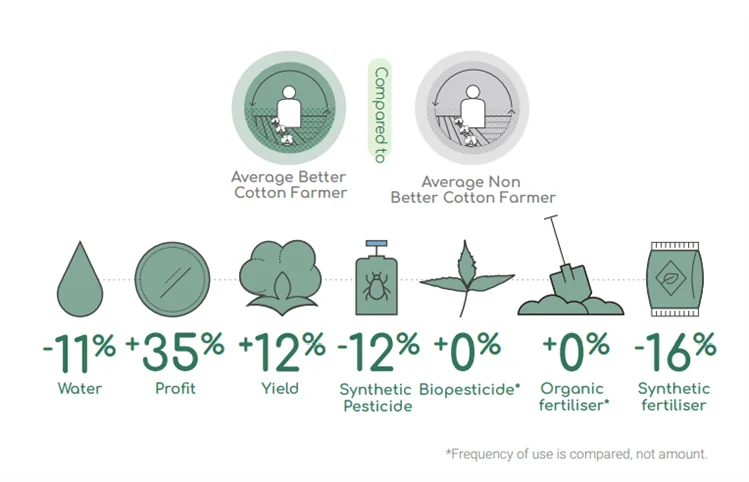
This approach was appropriate in the first phase of Better Cotton’s journey, from 2010. It helped us build an evidence base for Better Cotton-promoted practices and allowed us to demonstrate results in just one season while we were rapidly scaling up the programme. However, as Better Cotton’s reach neared the majority of cotton producers in some countries like Mozambique, and in certain production regions of some countries, it became increasingly challenging to obtain reliable data for Comparison Farmers with similar growing conditions and socio-economic situations. In addition, as our organisation and Monitoring & Evaluation department has matured, we recognised that now is the time to strengthen our impact measurement methodologies. So, in 2020, we phased out the collection of Comparison Farmer data. We then faced delays in developing needed IT infrastructure due to the Covid pandemic, but in 2021 began the complex shift to a new analytical approach.
Tracking trends over time, with a suite of evidence and more context
Rather than reporting on results in one season for Better Cotton Farmers vs Comparison Farmers, in the future, Better Cotton will report on the performance of Better Cotton Farmers over a multi-year timeframe. This approach, combined with enhanced contextual reporting, will improve transparency and strengthen the sector’s understanding of local cotton-growing conditions and national trends. It will also help us determine whether Better Cotton Farmers are demonstrating improvement over an extended period.
Measuring results trends over time is especially relevant in the context of agriculture because of the many factors — some beyond farmers’ control like changing rain patterns, floods, or extreme pest pressure — that can skew a single season’s results. In addition to the enhanced annual results monitoring, we will continue to engage in targeted deep dive research to assess how and why we see the results we do and measure the extent to which the programme is contributing to them.
Ultimately, Better Cotton is committed to promoting and catalysing positive farm-level impact at scale and we’re in it for the long run. Over the last 12 years, we have built up programmes in partnership with dozens of national expert organisations, millions of small-scale farmers, and thousands of individual farmers in large farm contexts. This work happens in the midst of increasing climate change risks, unpredictable weather, and fast evolving policy landscapes. In our current strategic phase toward 2030 and as we work to establish traceability, we also commit to further increase our credibility through more transparent reporting to demonstrate where and how progress is being made and where there is still room for improvement.
Other changes we are making for improved reporting
In addition to the longitudinal approach, we will also be integrating new farm performance indicators into our reporting model as well as a commitment to country life cycle assessments (LCAs).
Farm Performance Indicators
We will incorporate new social and environmental indicators from the newly released Delta Framework. Instead of our previous eight results indicators, we will measure our progress on the 15 from the Delta Framework, plus others linked to our revised Principles and Criteria. This includes new indicators on greenhouse gas emissions and water productivity, among others.
Commitment to country LCAs
Better Cotton has taken a principled approach over the years to not conduct a global life cycle assessment (LCA) due to the numerous credibility pitfalls of using global LCA averages for measuring and claiming programmatic impact. However, the science behind LCAs for some indicators is sound, and Better Cotton recognises that for industry alignment it must adopt an LCA approach. As such, we are currently developing plans for country LCAs that are credible and cost-effective to complement Better Cotton’s multifaceted impact measurement efforts.
Timeline for implementation
- 2021: The transition to this new reporting model requires a more robust data gathering and management system. Better Cotton began investment in a major upgrade of its digital data management tools to enable this shift in our analysis and reporting approach.
- 2022: Considering the scale and reach of Better Cotton, the adjustment takes considerable time, and the new reporting model is still under refinement. Pausing our reporting this year is required to help us put this new system in place.
- 2023: We plan to launch a call for technical proposals for development of country LCAs in early 2023 and aim to have one to two country LCAs completed by the end of the year to complement our holistic reporting.
More information
Find out more about Better Cotton’s approach to Monitoring, Evaluation and Learning:
